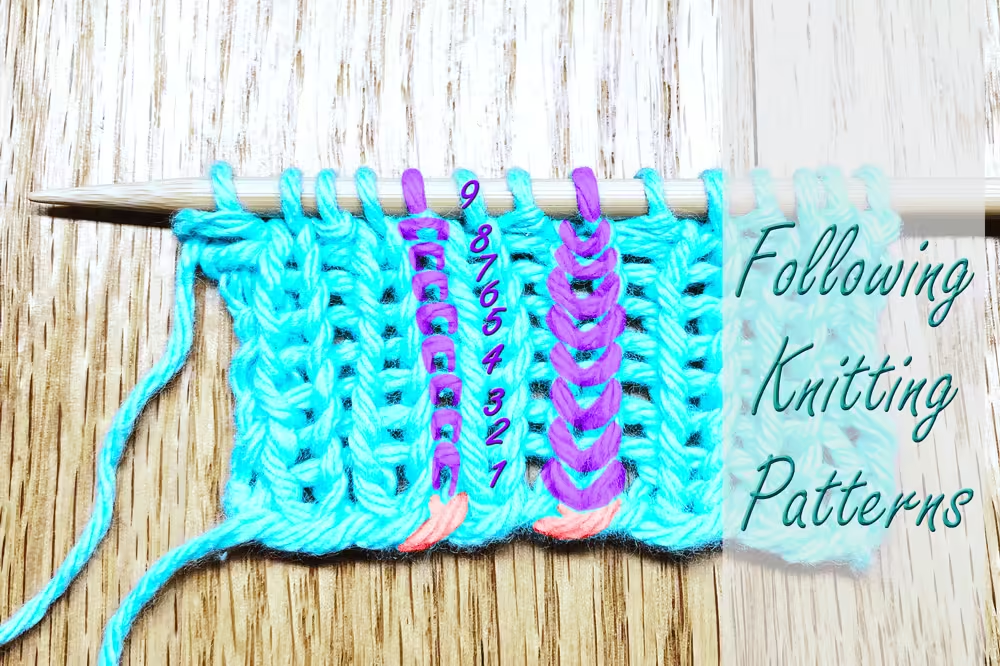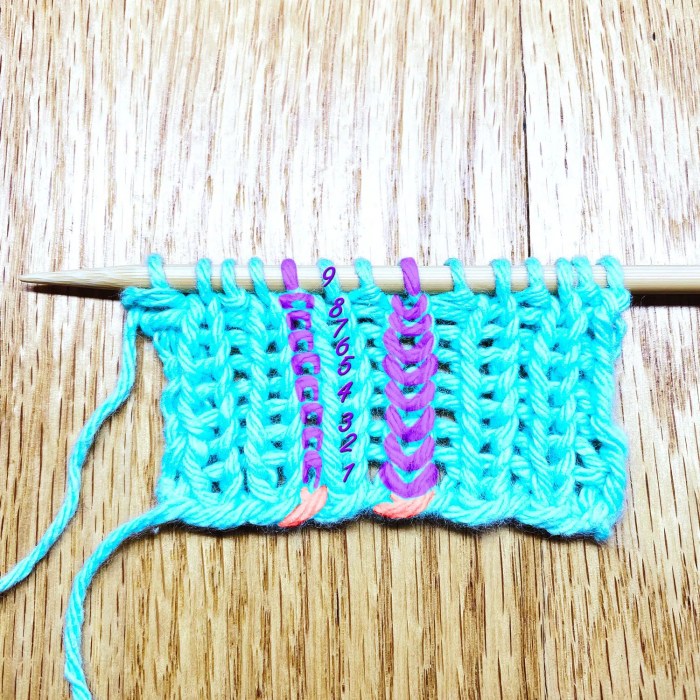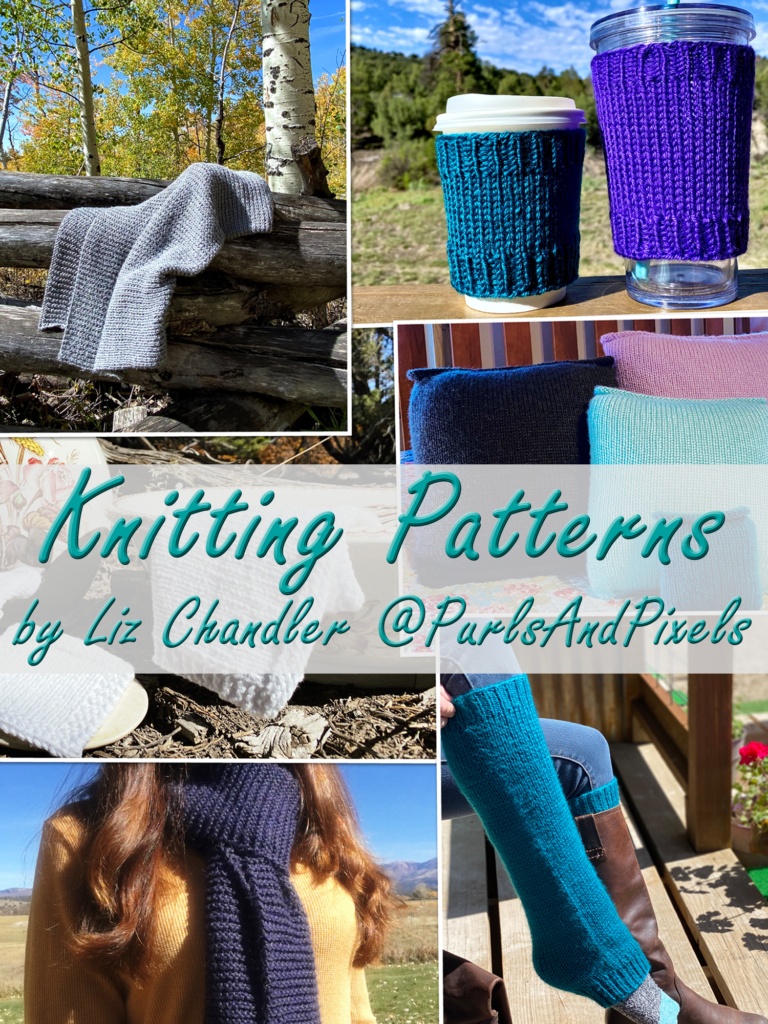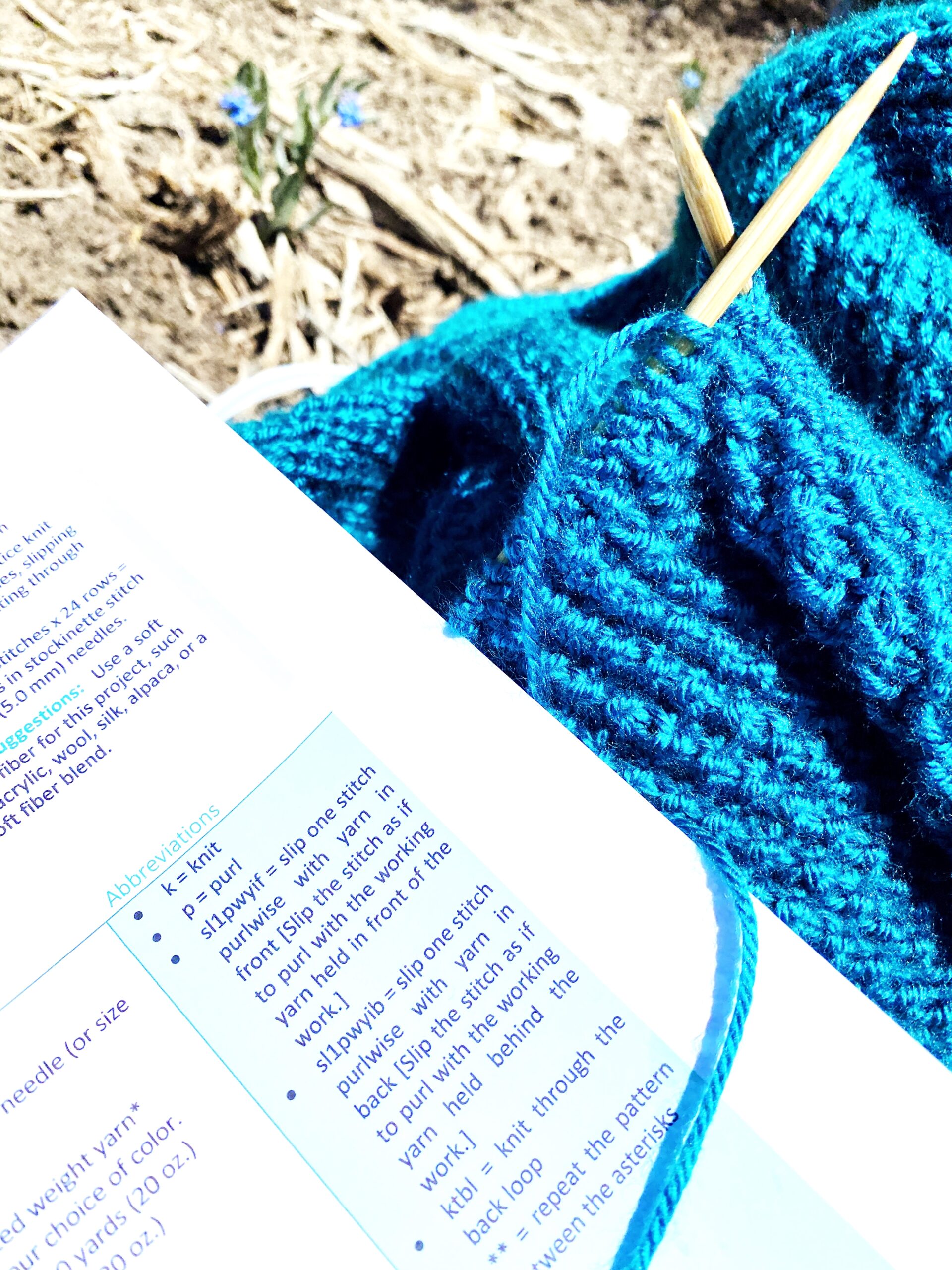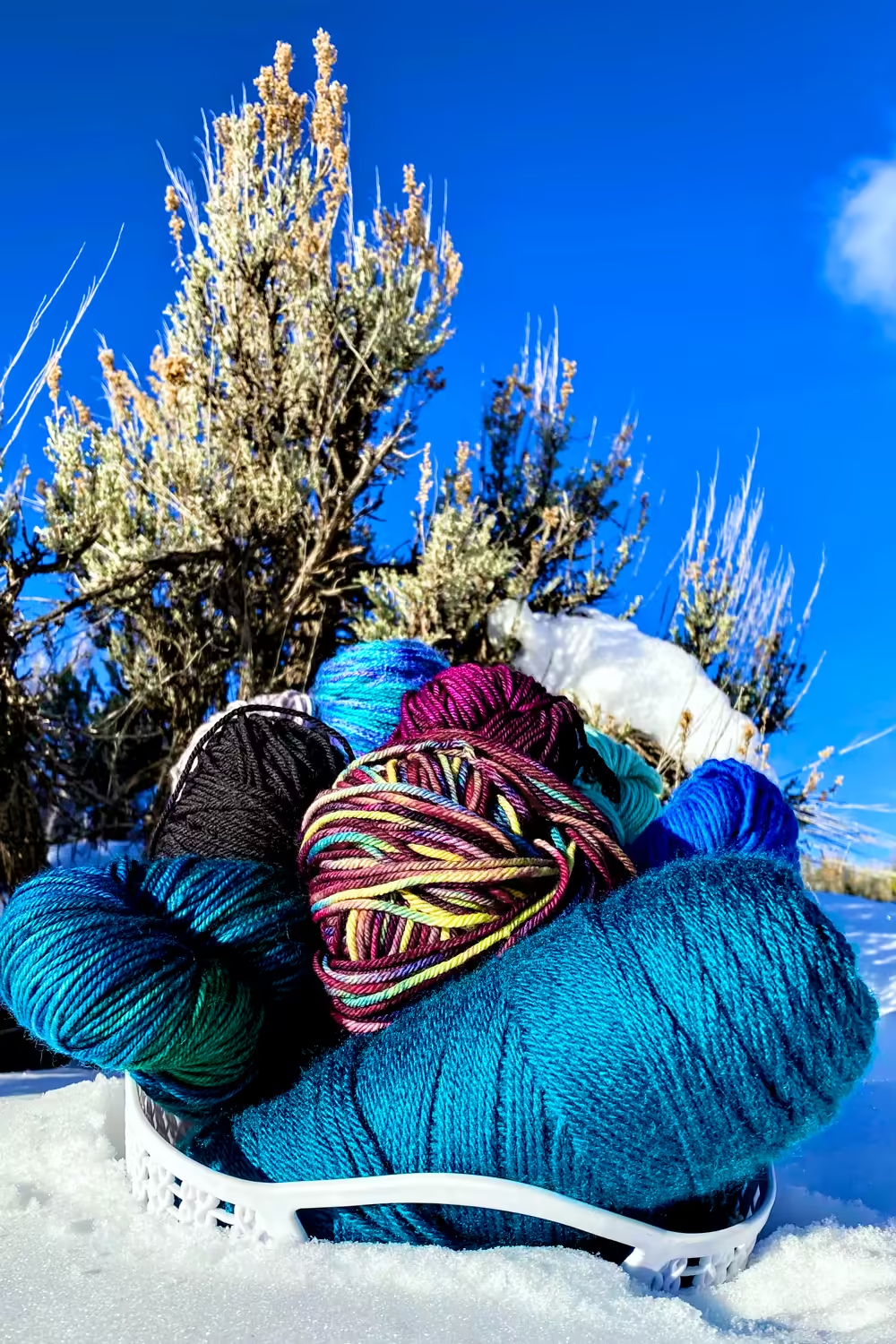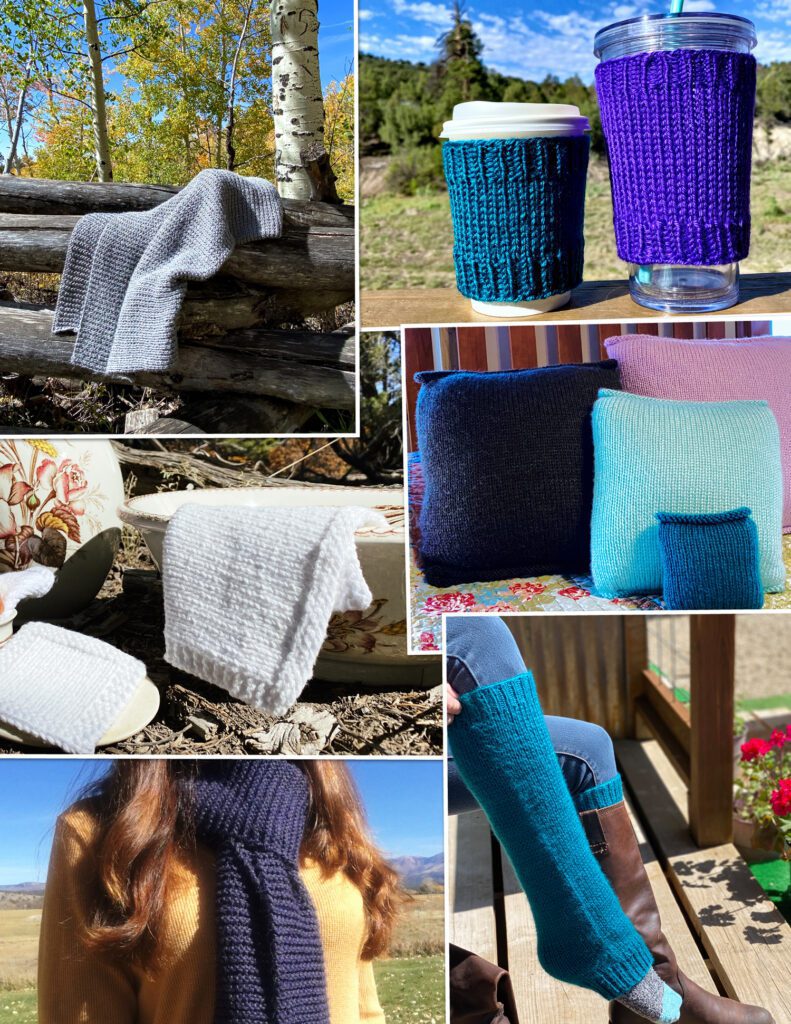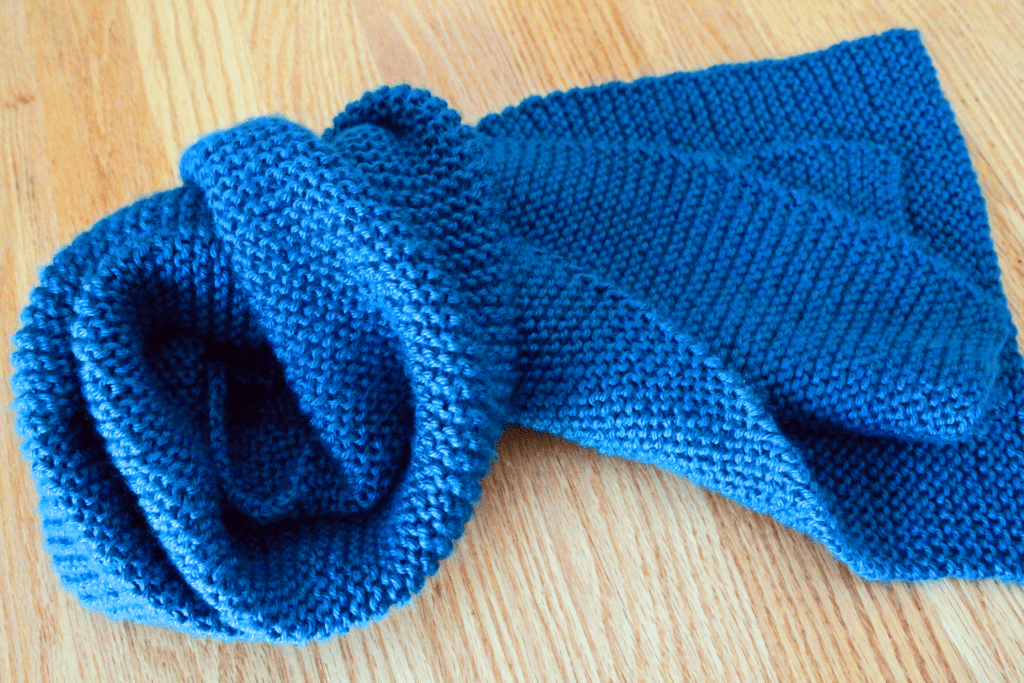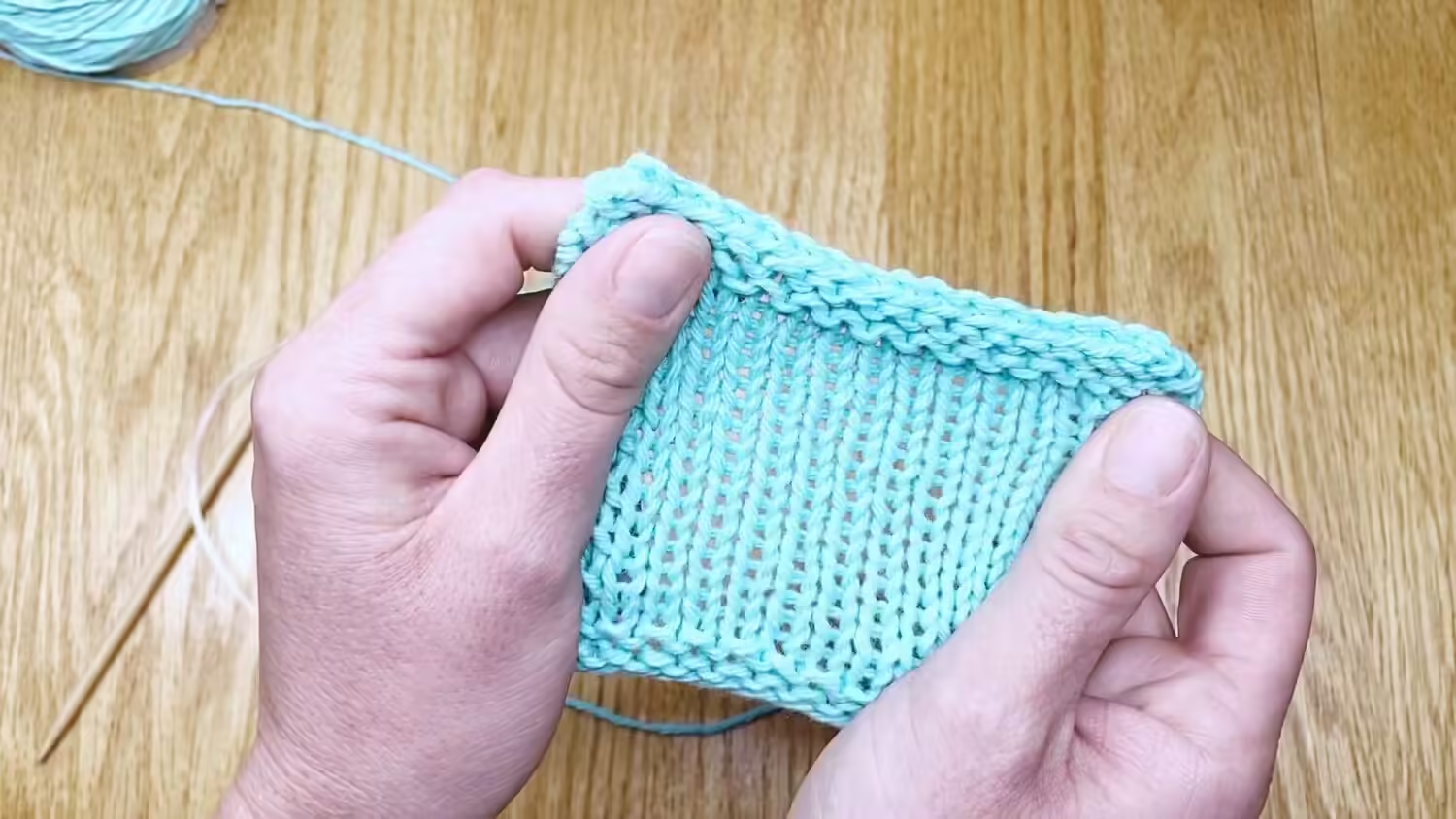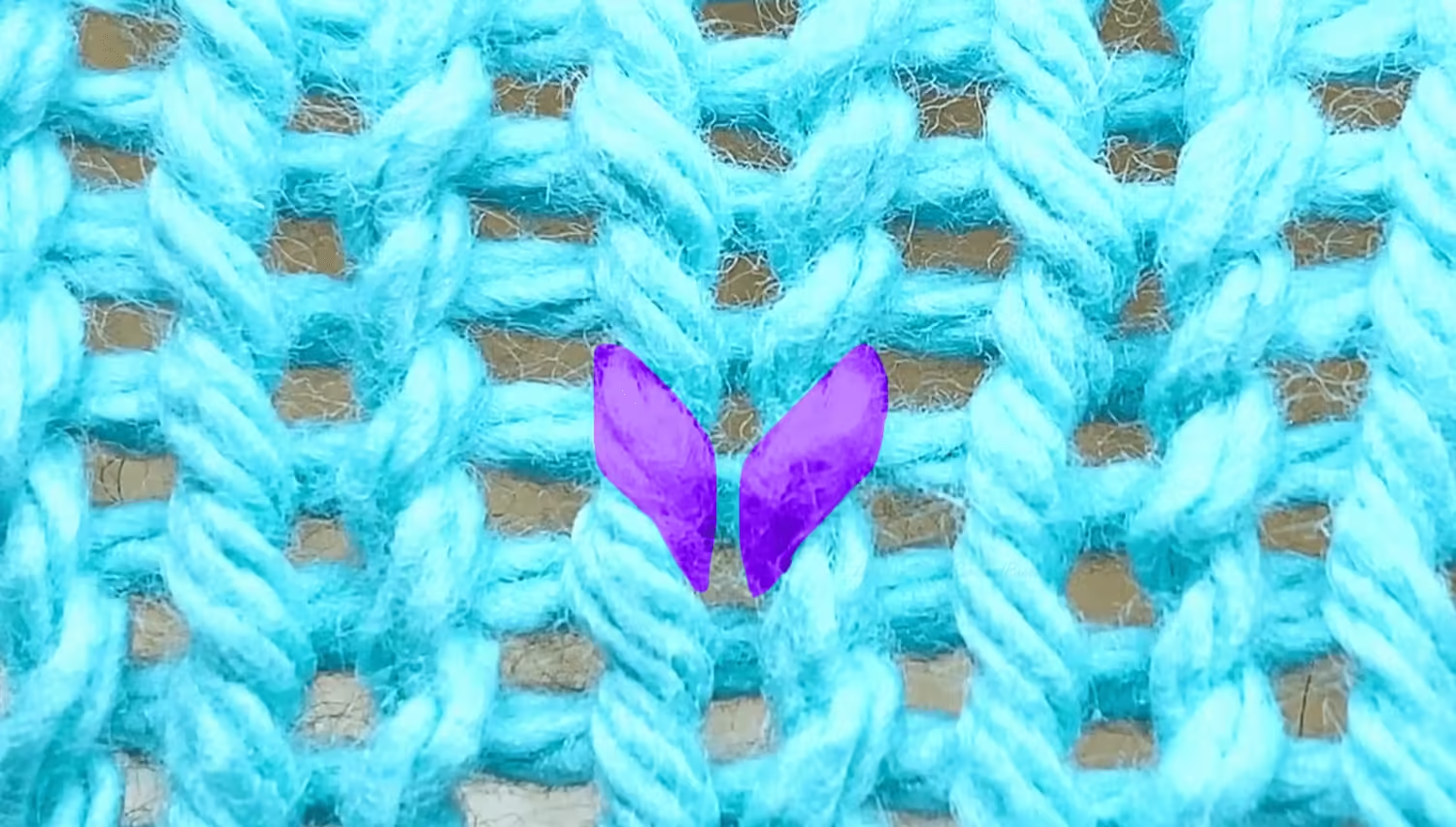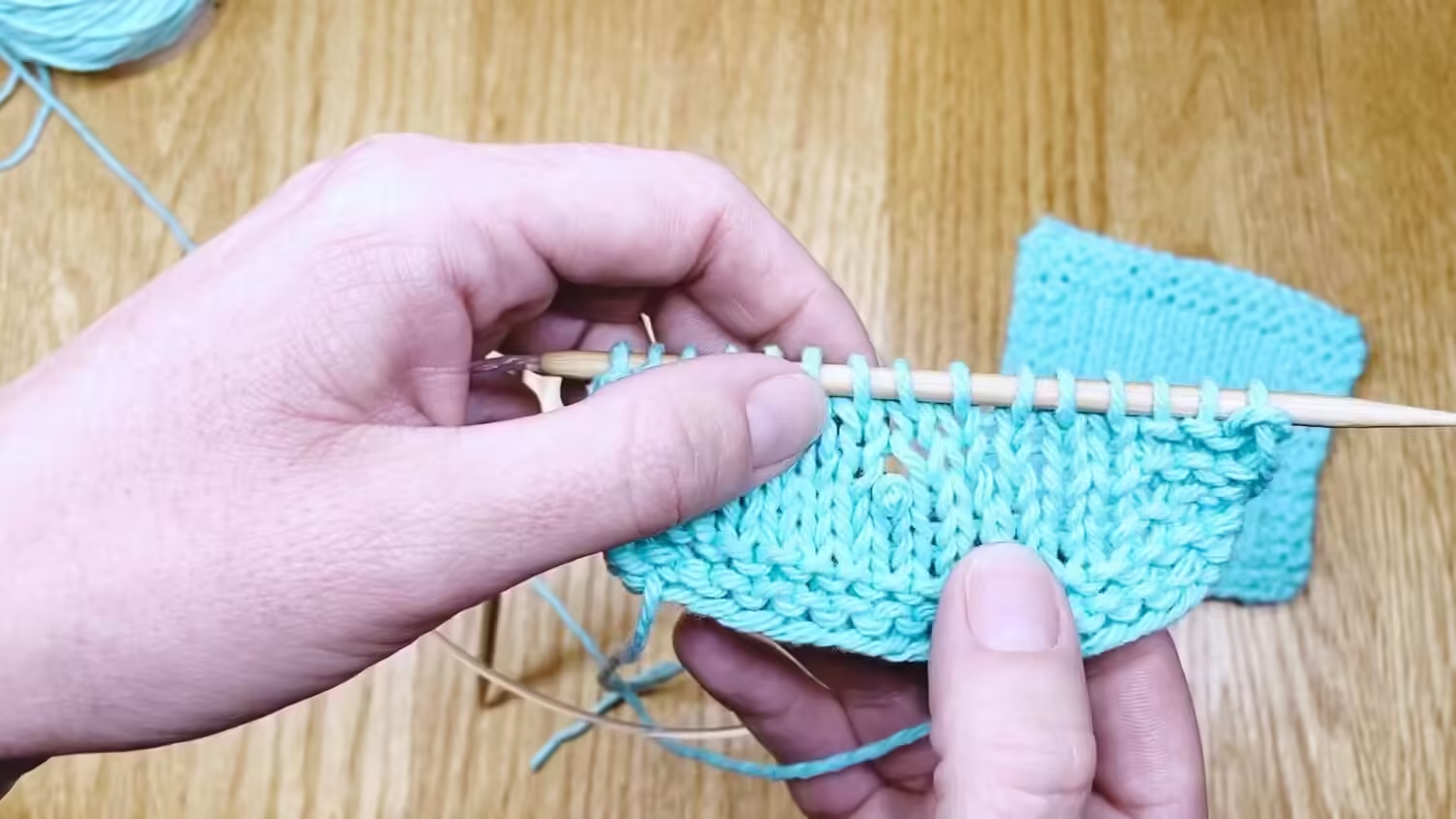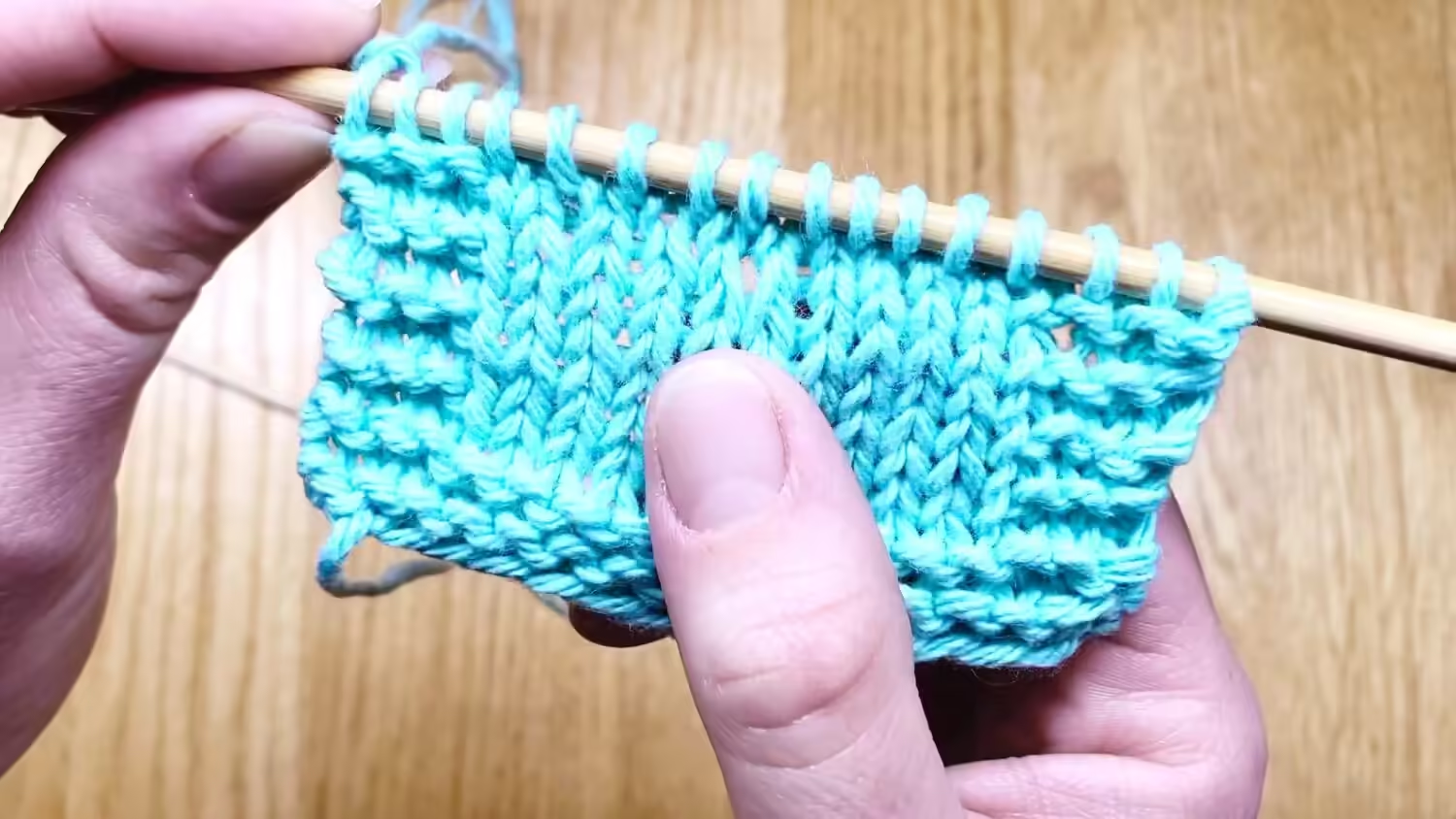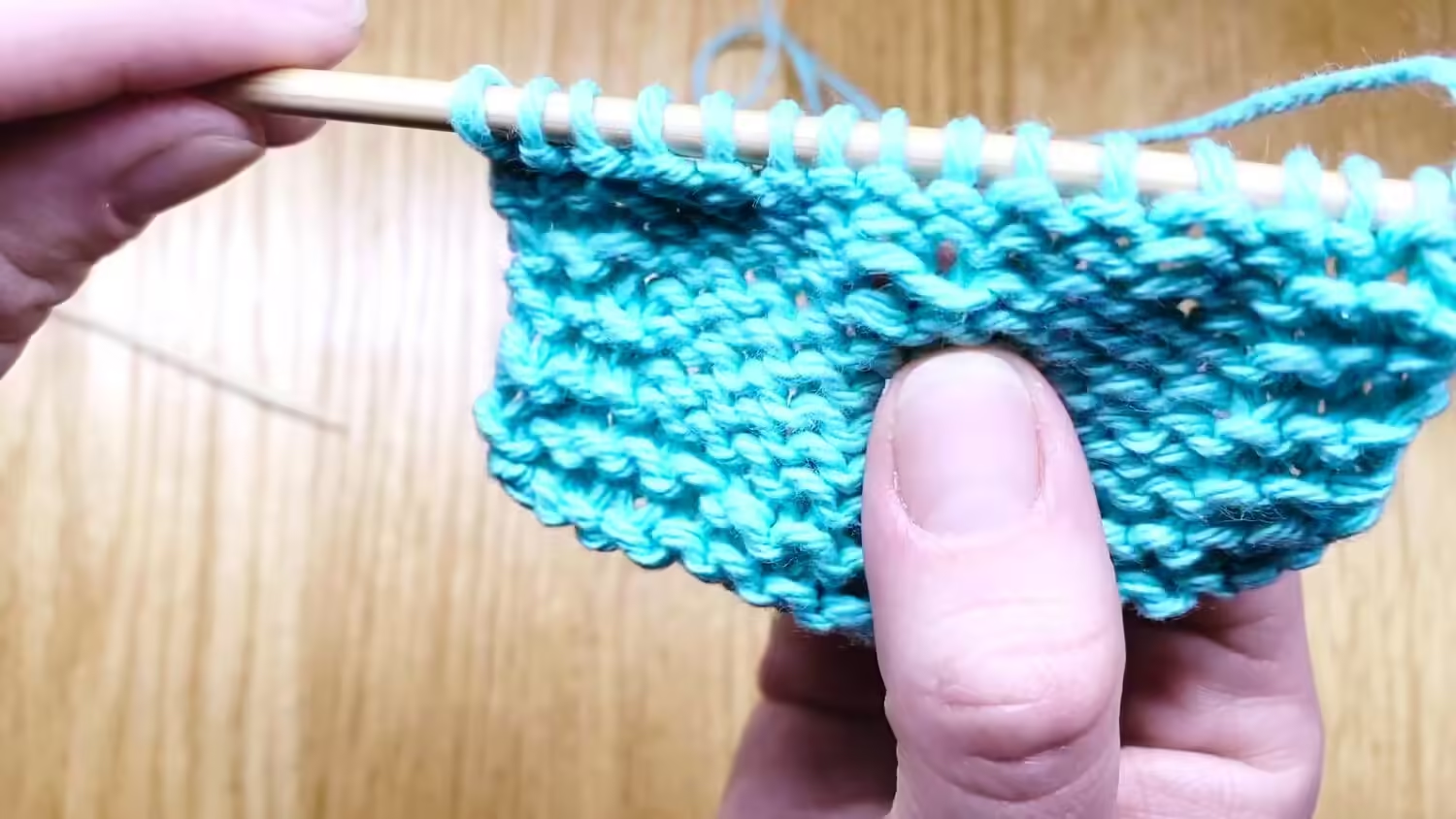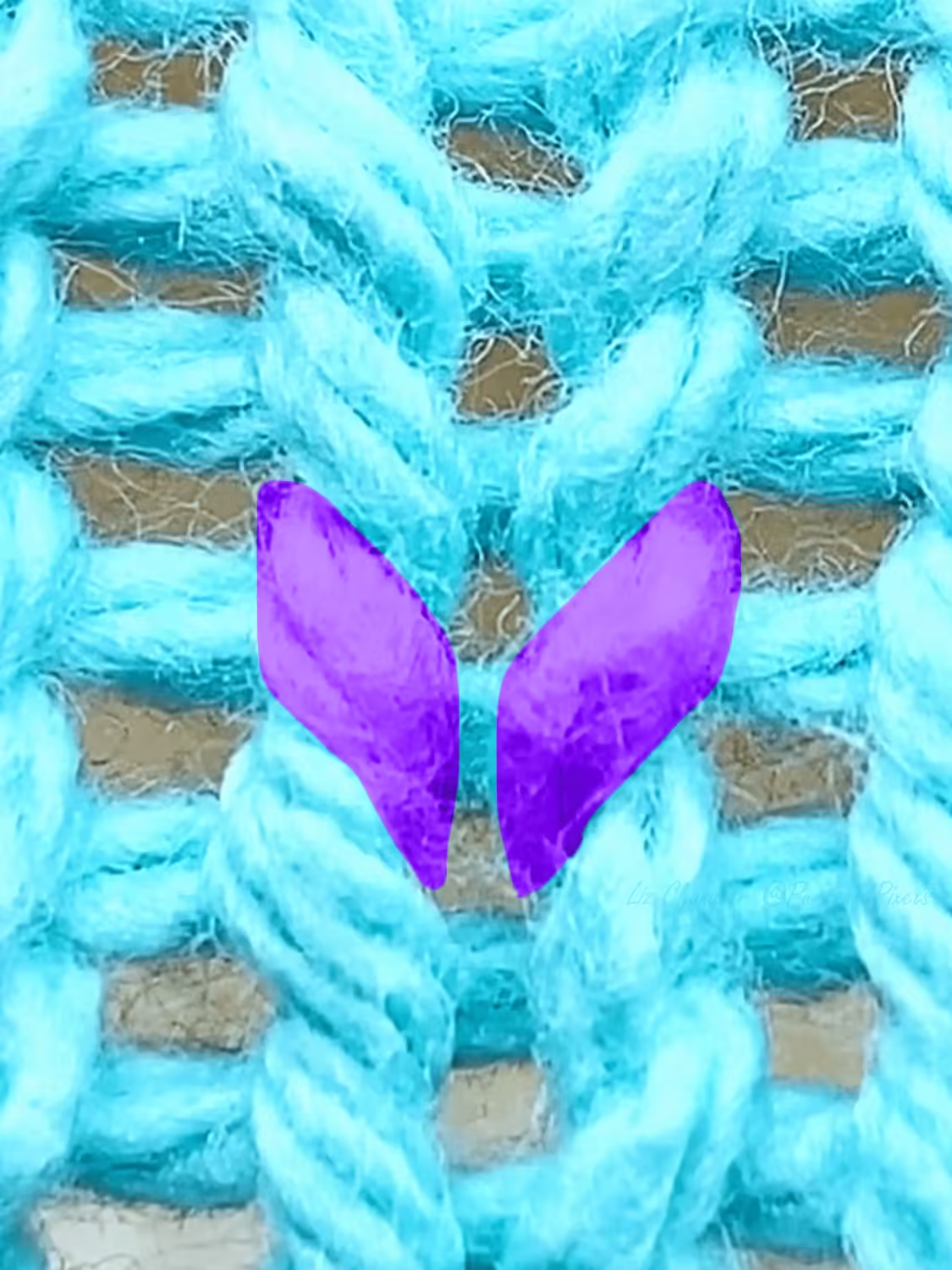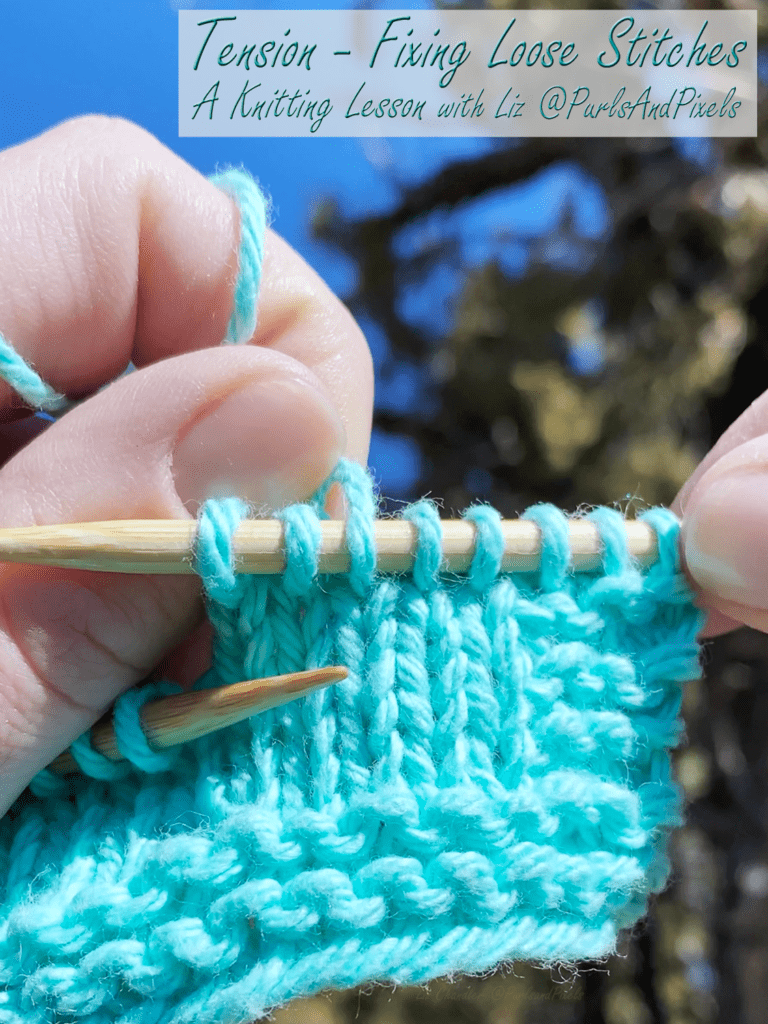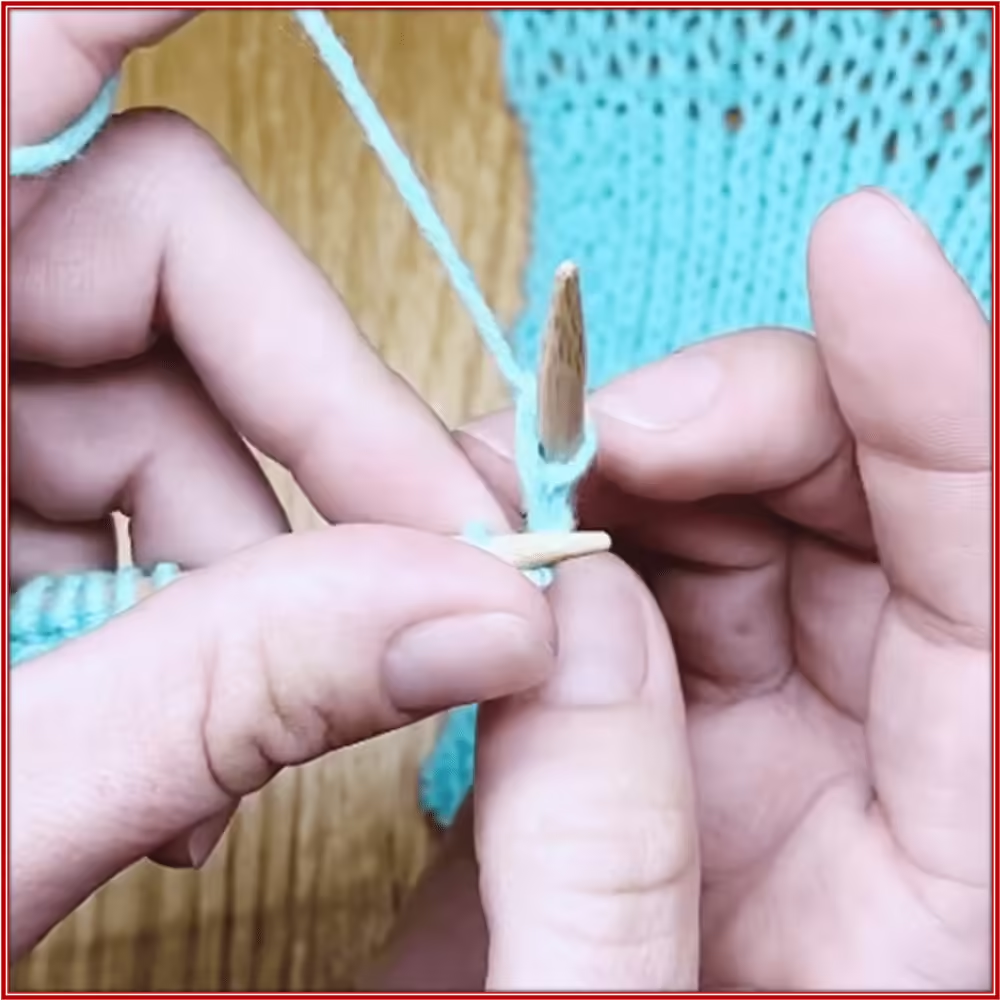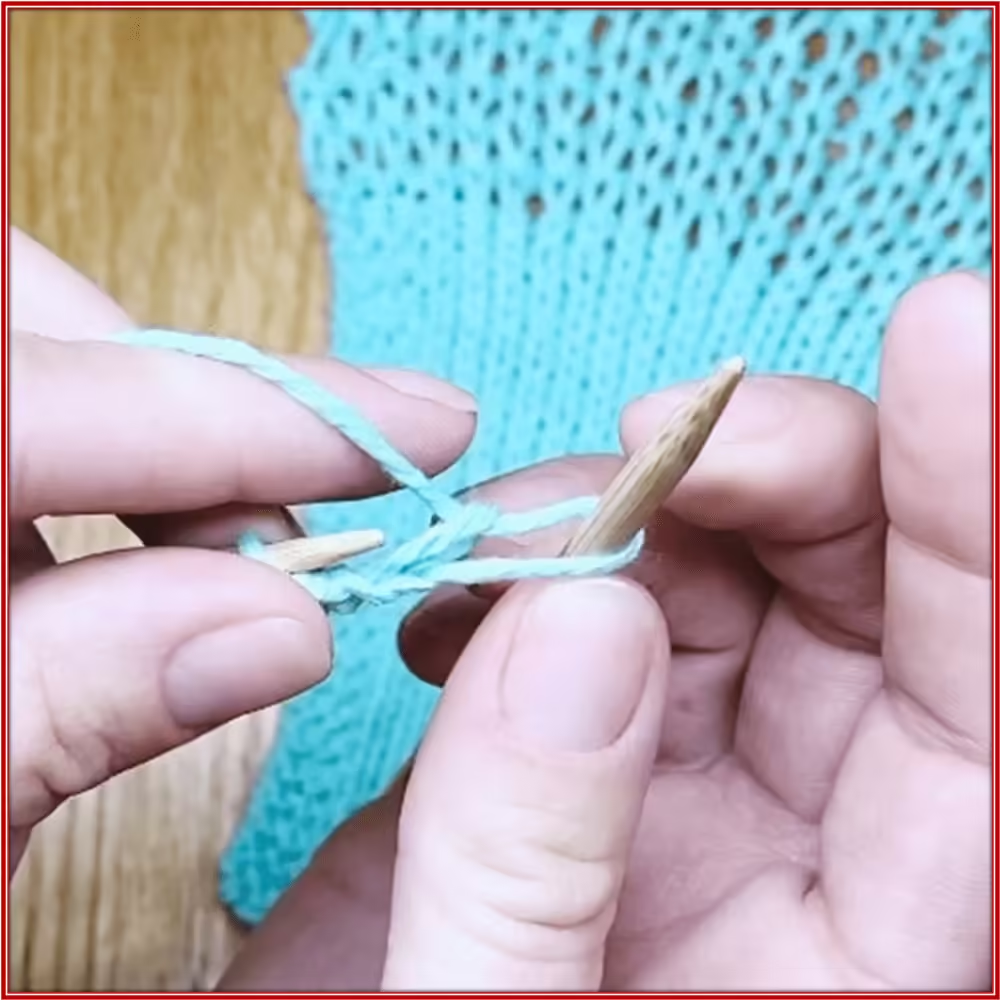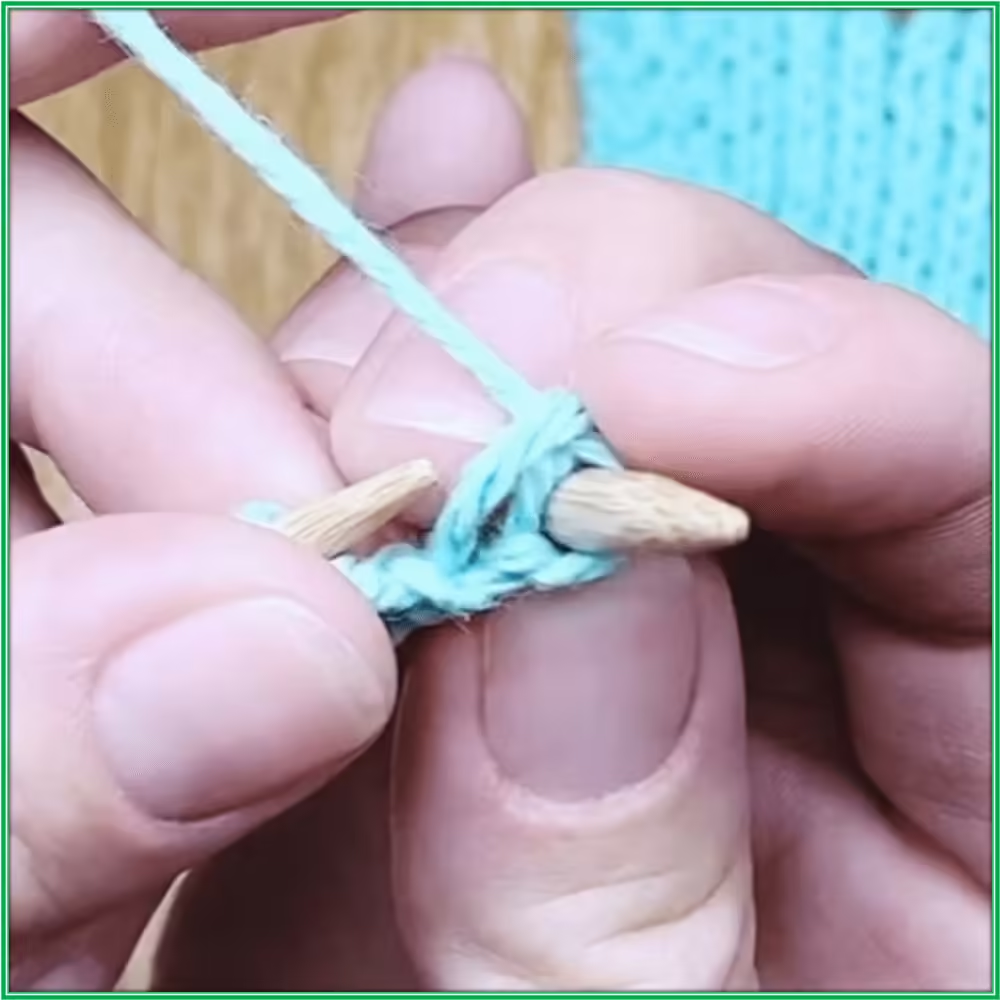Patterns often provide a “gauge” and ask you to “check your gauge” before you start. But what does that mean?

Knitting gauge is a way of measuring how big your stitches are. Gauge will change based on the size of your needles, the weight of your yarn, and the tightness by which you knit.

If you use a larger knitting needle, your knitting will have a larger gauge. Similarly, a smaller needle knitting up the same yarn will create a fabric with a smaller gauge.

But even when using the same needles and yarn, stitch size can vary from person to person; it depends on how tightly they each loop the yarn around the knitting needles.
Why Do Patterns Include Gauge Instructions?
Knitting patterns contain gauge instructions to help you ensure you make your finished object the same size as the author’s finished object. If your gauge is bigger (you knit more loosely) than the pattern-writer’s gauge, you will knit an item that is too big. On the other hand, if your gauge is smaller than the pattern-writer’s gauge (you knit more tightly), you will knit an item that is too small.
Usually, gauge is checked by knitting a small practice square, called a “gauge swatch.” After knitting the practice square, you will measure it to see if your knit stitches are the same size as the author’s stitches.

Gauge swatches are most often made in one of two sizes: 1-inch by 1-inch or 4-inches by 4-inches. One-inch gauge swatches are typically used only on projects with very fine yarn and thin needles. The larger 4-inch gauge swatch gives you a more accurate estimate of your average stitch size, especially with heavier-weight yarns. The pattern writer will tell you what size gauge swatch to make in the gauge section of the instructions.
Below you will find both video and written guides to help you learn how to make a gauge swatch and measure it to ensure your knitting will be the correct size. I’ve also included some sample patterns for knitting borderless and bordered gauge swatches.
Video Guide: Knitting Gauge
Written Guide: Knitting Gauge Swatches
Do You Have to Make a Gauge Swatch?
I have been told that you should never, ever skip the gauge check. Well, that seems just a little daunting. So, here is my advice: when size matters, you should not skip a knitting gauge check.
For example, if you are making a blanket or dishcloth and you do not care if it turns out a few inches larger or a few inches smaller than the pattern predicts, go ahead and skip the gauge. Just know you will be gambling with the size of your knit.
On the other hand, you should absolutely check your knitting gauge when the size of your finished knit matters. Especially for wearable knits like hats, gloves, and sweaters, you will want to be sure to check your gauge. If you don’t, you may knit too tightly and end up with an extra small version of what you wanted. Or you could knit too loosely, and your work will be too big.

For the purposes of this guide, you can absolutely skip your gauge check for your first few projects. You may end up with a slightly small or slightly oversized washcloth at first, but this is fine, especially when you are learning.
To successfully make a gauge swatch, you will need to understand the basics of knitting. Once you have studied the cast on, knit stitch, purl stitch, and bind off, you will have the skills to make a gauge swatch. Come back and review this section when you are ready to make your first clothing item; you really should check your gauge for ear warmers, hats, gloves, and mittens.
Understanding Gauge Instructions in Patterns
Most patterns will contain a section phrased something like this:
Gauge: 19 stitches x 26 rows = 4 x 4 inches
These are the instructions for your gauge swatch.
The above gauge instruction example is telling you that a row of 19 stitches should measure 4 inches. A column of 26 stitches should also measure 4 inches. Stated another way, to check your gauge, you need to cast on 19 stitches and knit for 26 rows; the resulting square should measure 4 inches on each side.

If the pattern does not tell you otherwise, assume your gauge swatch should be knit in stockinette stitch (knit one row, purl one row, repeat).
Before you start, be sure you have enough yarn for both your project and your gauge square. You should always make your swatch with the same yarn and knitting needles you will use for the main project. If you do not account for the yarn you will use to make the gauge swatch, you may not have enough yarn left to finish your project.
Making Gauge Swatches
Once you have found the gauge instructions, you will need to knit your swatch. If you are in a hurry, you can make a quick borderless gauge swatch. Or, if you want to make your measurements more accurate, you can add a small border to your swatch; this will keep your swatch from curling and make it easier to measure.
Quick Borderless Gauge Swatch
The simplest way to check gauge is to cast on the number of stitches listed in the gauge pattern. Then, usually in stockinette stitch (knit one row, purl one row, repeat), you will knit the number of rows the gauge pattern calls for.
Example Pattern for a Quick Borderless Gauge Swatch:

The pattern reads, “Gauge: 19 stitches x 26 rows = 4 x 4 inches in stockinette stitch on US No. 7 (4.5 mm) needles.”
Row 1: Cast on 19. Turn.
Row 2: Purl 19. Turn.
Row 3: Knit 19. Turn.
Rows 4 through 25: Repeat Rows 2 and 3.
Row 26: Bind off with purl stitches.
Bordered Gauge Swatch for Accuracy
Because stockinette stitch tends to curl at the edges, it can be tricky to measure all the stitches on a borderless stockinette stitch square.
To reduce the curling, you can add a two row and a three 3 stitch border in garter stitch (all knit stitches). Do this by adding six stitches when you cast on. Knit two rows, and begin your stockinette square, adding 3 knit stitches on both ends of your rows. After you have knit all the gauge rows, end with a garter stitch border. If the gauge has an odd number of rows, you can simply add one knitted row and bind off. If the gauge pattern called for an even number of rows, knit those rows, turn, then add the following border: Knit 3, purl the number of stitches called for in the gauge, knit 3, turn. Bind off.

To clarify, let’s look at some example patterns that add a border to common gauge swatches.
The patterns in my Learn to Knit guide are in one of three gauges.
- Cotton washcloths and face scrubbies are in a gauge of 19 stitches x 26 rows = 4 x 4 inches in stockinette stitch on US No. 7 (4.5 mm) needles.
- Hats, baby blankets, and leg warmers are in a gauge of 18 stitches x 24 rows = 4 x 4 inches in stockinette stitch on US No. 8 (5.0 mm) needles.
- Ear warmers, fingerless gloves, and mittens will be made in a gauge of 20 stitches x 28 rows = 4 x 4 inches in stockinette stitch on US No. 5 (3.75 mm) needles.
You can make bordered gauge swatches for each of these with the patterns that follow.
Example Patterns for Quick Bordered Gauge Swatches:

(This example adds a border to the borderless gauge swatch above.)
The pattern reads, “Gauge: 19 stitches x 26 rows = 4 x 4 inches in stockinette stitch on US No. 7 (4.5 mm) needles.”
Row 1: Cast on 25. Turn.
Row 2: Knit 25. Turn.
Row 3: Knit 25. Turn.
Row 4: Knit 3, purl 19, knit 3. Turn.
Rows 5 – 30: Repeat rows 3 & 4.
Row 31: Knit 3, purl 19, knit 3. Turn.
Row 32: Bind off with knit stitches.

The pattern reads, “Gauge: 18 stitches x 24 rows = 4 x 4 inches in stockinette stitch on US No. 8 (5.0 mm) needles.”
Row 1: Cast on 24. Turn.
Row 2: Knit 24. Turn.
Row 3: Knit 24. Turn.
Row 4: Knit 3, purl 18, knit 3. Turn.
Rows 5 – 28: Repeat rows 3 & 4.
Row 29: Knit 3, purl 18, knit 3. Turn.
Row 30: Bind off with knit stitches.

The pattern reads, “Gauge: 20 stitches x 28 rows = 4 x 4 inches in stockinette stitch on US No. 5 (3.75 mm) needles.”
Row 1: Cast on 26. Turn.
Row 2: Knit 26. Turn.
Row 3: Knit 26. Turn.
Row 4: Knit 3, purl 20, knit 3. Turn.
Rows 5 – 32: Repeat rows 3 & 4.
Row 33: Knit 3, purl 20, knit 3. Turn.
Row 34: Bind off with knit stitches.
Finishing Gauge Swatches
If your gauge swatch looks a bit too big right off the needles, it may be because it needs to be prepared like you would prepare your finished knitted object. Weave in your ends, wash, and block the gauge square the same way you plan to do in the pattern. This step can be particularly important if you are using cotton, wool, or another shrinkable yarn. Washing and blocking your gauge swatch will show you how your finished object will wash and block. Cotton and wool, for example, shrink quite a bit in the wash.

Measuring Gauge Swatches
Measure Borderless Gauge Swatch
For a borderless gauge swatch, simply measure across and then top-to-bottom.


Measure Bordered Gauge Swatch
For a bordered swatch, make sure to measure the square inside the border you have created. The border should not be included in your measurement.


In our examples, the gauge swatch should measure four inches by four inches (4″ x 4″).
If your swatch matches the pattern’s guide, your gauge is correct. You can start knitting your main project.
Adjusting to Reach the Correct Gauge
If your swatch is too big or too small, you will need to make some adjustments. If the square is too big, select a smaller set of knitting needles and try knitting your swatch again. On the other hand, if your swatch came out too small, choose a larger set of knitting needles and try again. You will need to continue testing needle sizes by making gauge swatches until your square is the correct size.
To conserve your yarn, you may want to frog (unravel) your swatch and re-knit it with the same yarn. If you don’t know how to frog, you can learn to unravel your knitting here.
Practice With My Knitting Patterns

Are you ready to knit something new? Browse all of my free and deluxe knitting patterns here.

Up Next
In the next lesson we will learn to neaten the edges of flat knits by intentionally slipping the first stitch of every row.


